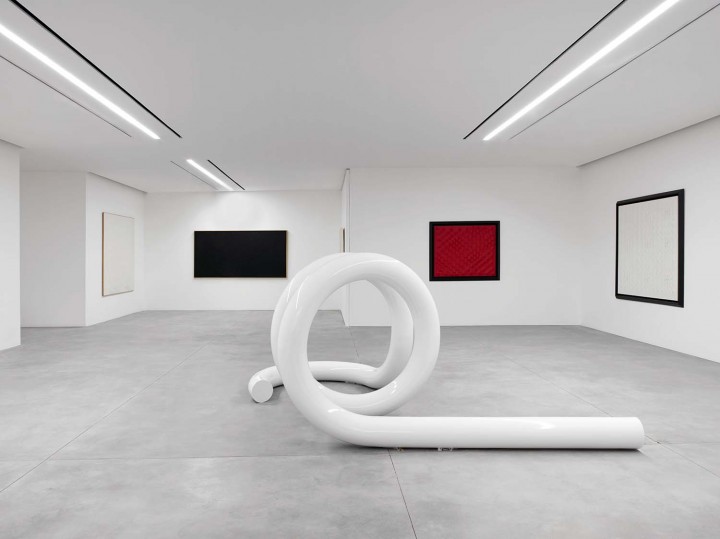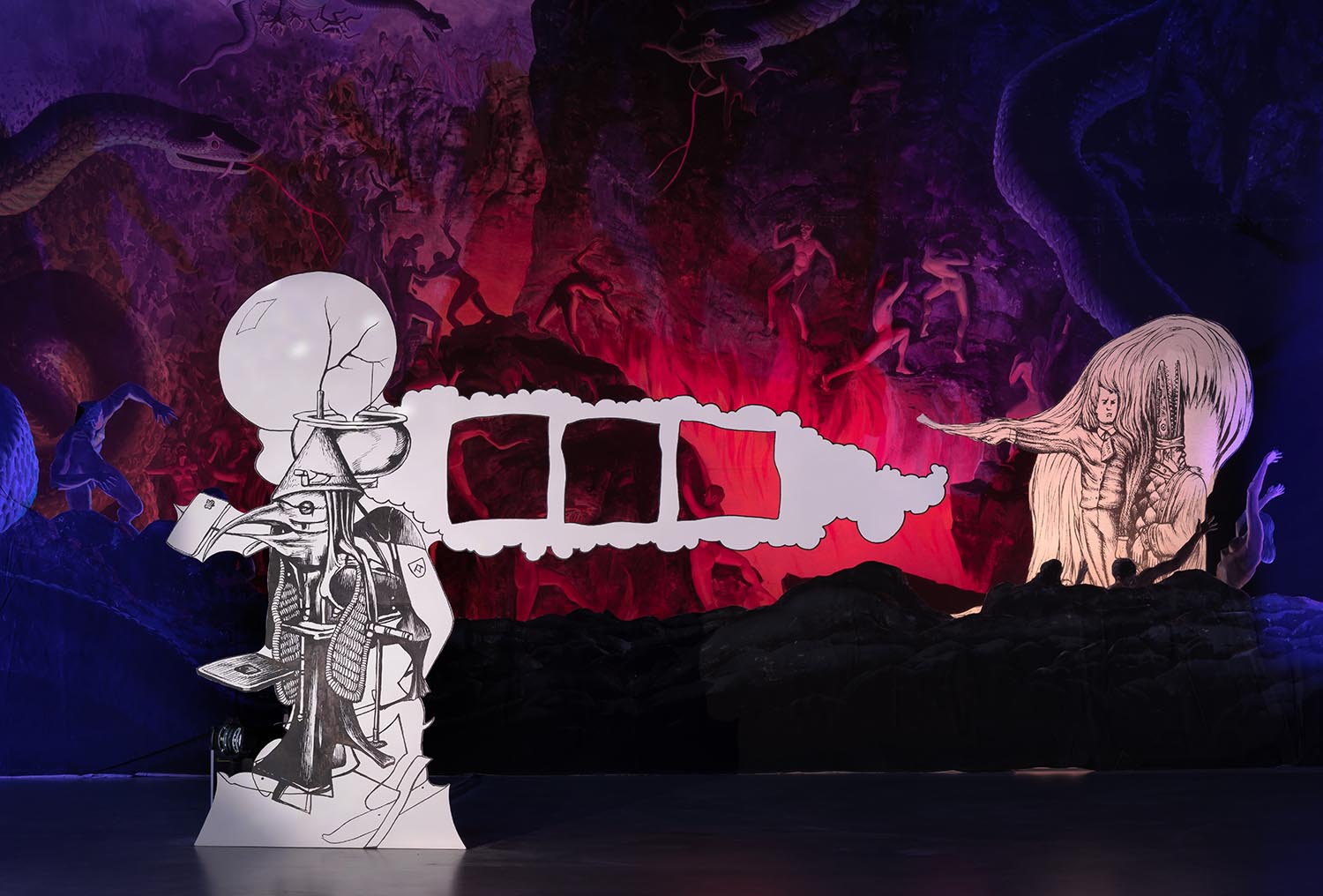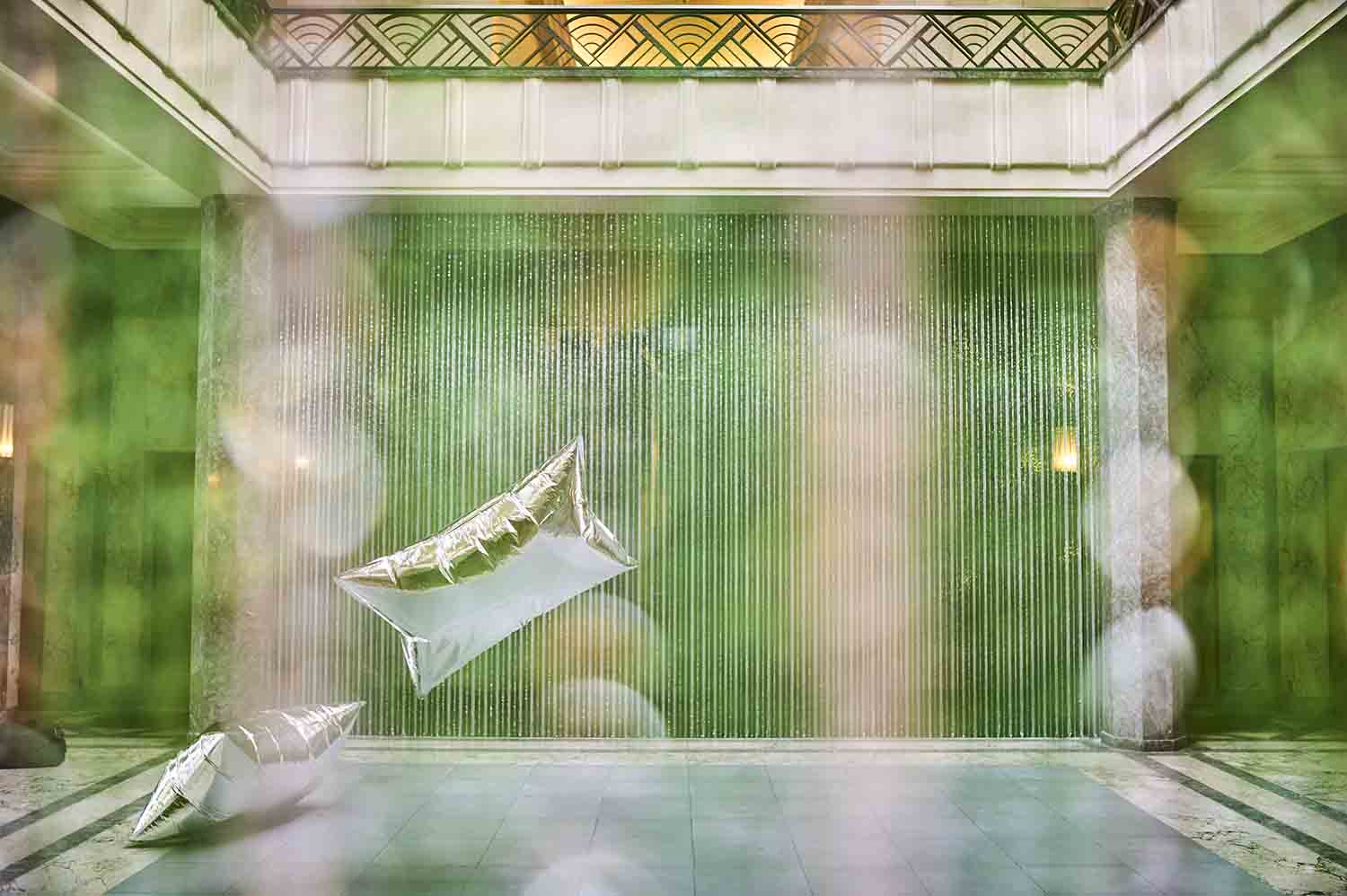The opening of the Aïshti Foundation in Lebanon in the last week of October was a major event in the international contemporary art circuit, at least judging by the number of personalities present that day in Beirut.
Over a weekend, the Lebanese collector Tony Salamé and his wife Elham created a micro-climate worthy of Art Basel Miami (temperatures were in the mid-80s), whose director, Marc Spiegler, was incidentally there accompanied by a staggering number of gallerists.
The name Aïshti comes from the first fashion boutique opened by Tony Salamé in 1989. Today, he heads a luxury empire that encompasses several department stores, restaurants, magazines, spas and the like. The latest of his shopping malls, “Aïshti on the Sea,” designed by the architect David Adjaye in the inner suburbs of Beirut, houses his foundation, where a four-thousand-square-meter area (10% of a colossal building) is devoted to the presentation of his contemporary art collection.
Just before the opening, Tony Salamé invited his guests, under military escort, to visit his storage unit located in a secret place, security oblige, and discover the site-specific project “Postscript of the Arabic Translation,” devised by the artists Suha Traboulsi and Walid Raad.
On each of the crates is pinned an image of the work it contains as well as the name of the gallery where it was purchased. The striking number of crates — 2,500 in all — points to the speed with which the collector has amassed the works and put together his collection in less than ten years, well advised by Jeffrey Deitch. The latter also presented “The Extreme Present” at the Metropolitan Art Society, a venue also managed by Aïshti, to which he invites galleries such as Franco Noero and Balice Hertling to curate projects. Around a large Alex Israel ensemble, Jeffrey Deitch arranged the works of hip young artists like Ian Cheng, Korakrit Arunanondchai, Josh Kline and Kathryn Andrews.
The foundation’s inaugural show was entrusted to Massimiliano Gioni, artistic director of the New Museum in New York and the Trussardi Foundation in Milan. Titled “New Skin,” it brings together two hundred works around the idea of abstraction. To enter the museum with its white cube architecture, you have to take the lifts adjoining the large shop, which give direct access to the exhibition on the first floor (there are four in all). The first room houses a sequence of Ryan Sullivan’s “process” pictures and a huge conceptual Willem de Rooj bouquet. To root the project in a historical continuum, the next room is filled with abstract paintings from the Italian scene of the 1960s: Fontana, Bonalumi, Castellani and Manzoni.
Further on, through a large window you can see the shopping mall with a view of the Saint Laurent boutique. Here again we find Italians such as Penone, Piacentino and Pistoletto, and an immense horizontal painting by Wade Guyton, used as the illustration for the catalogue cover designed by Brendan Dugan of Karma, and published by Skira.
Through the four floors there is an amazing list of international artists. The uppermost museum space is filled with a group of artists whom certain visitors will not be surprised to find here, because they are associated with the market: Josh Smith, Sterling Ruby, Urs Fischer, Dan Colen, Tauba Auerbach, Joe Bradley, Glen Ligon, Richard Prince, Wade Guyton, Seth Price and Rudolf Stingel.
Despite criticism, this event should be placed in the context of the Middle East and more particularly that of Lebanon. Until today, these artists have never had a chance to be presented here. Even for the directors of local institutions, whose programs are radically different, such as the Beirut Art Center and the Home Works platform, the birth of this foundation offers a unique opportunity to galvanize and inform the country about contemporary art, while offering an international and positive visibility to this nation ravaged by years of civil war, where the election of a president has been doomed to failure for the past two years. And even if they are a minority, certain Lebanese artists are also present, such as Etel Adnan, Rayyane Tabet, Akram Zaatari and Ziad Antar.
Some analysts pinpointed the limits of the “New Portraits” show, made up of some twenty “Instagram Paintings” by Richard Prince in the windows of Aïshti shops in downtown Beirut. By getting too close to fashion, art might itself also become “last season’s collection,” even if it is indeed in the fashion arena that recent private events put on by museums have been played out (Prada Foundation and Louis Vuitton). On the final day, Tony Salamé decided to take those still present to visit the Baalbek site, that Greco-Roman masterpiece that is included in the UNESCO World Heritage list, located just a few miles from the Syrian border, and less than 125 miles from Palmyra, now destroyed by ISIS. Who, today, is aware of the consequences of the current war and its impact on Lebanon? In this unstable and dangerous geopolitical context, Tony Salamé’s resistance effort is monumental and impressive, and can only be hailed.



